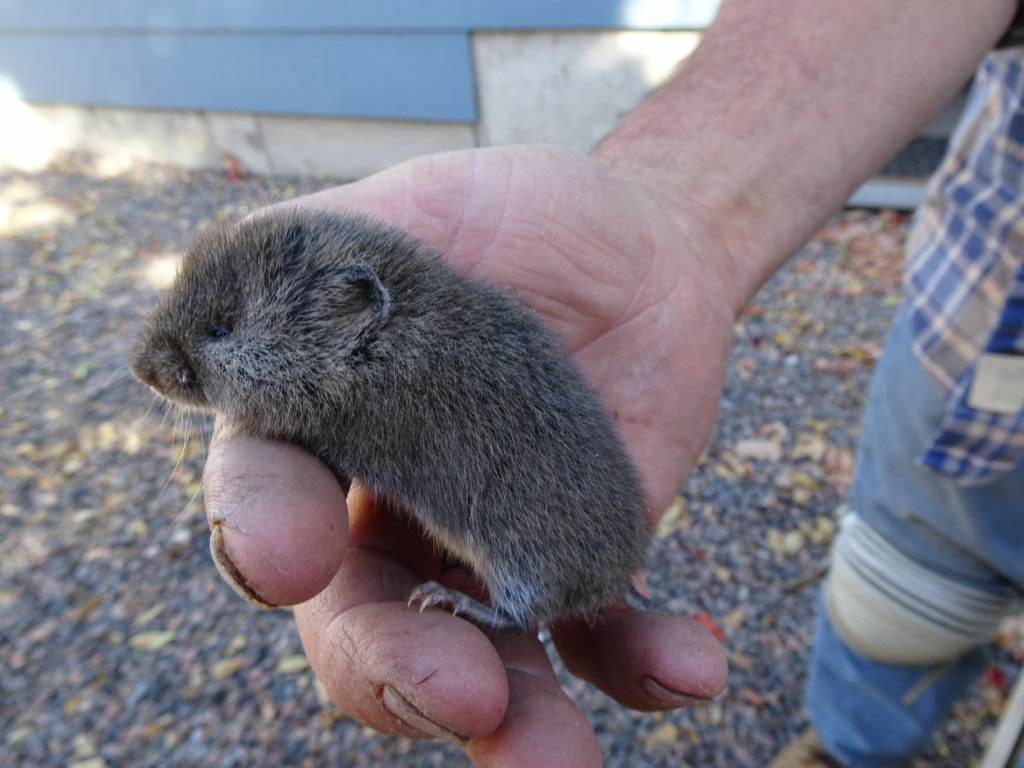Comprehensive Vole Pest Control Services in Utah
Comprehensive Vole Pest Control Services in Utah
Blog Article
Comprehensive Guide to Reliable Vole Pest Control: Invasion Identification and Therapy Approaches
In the realm of reliable parasite control, vole invasions pose an one-of-a-kind difficulty that demands a calculated strategy. By discovering the nuances of vole actions, understanding key indications of infestation, and evaluating a range of control options, one can develop an extensive approach to battle these evasive insects.
Recognizing Vole Habits
Vole habits is identified by their burrowing routines and fast recreation prices, making them a tough parasite to control successfully. Their quick reproductive price more makes complex control initiatives, with women qualified of producing multiple trashes in a single year, each consisting of several spawn.
Voles are most energetic during the morning and evening hours, investing the majority of their time foraging for food. Their burrowing routines not only interrupt grass and gardens however also make them challenging to get rid of and spot. Understanding vole behavior is crucial for efficient parasite control strategies. By recognizing their burrow places, checking feeding areas, and carrying out targeted control techniques, such as trapping or environment adjustment, vole infestations can be handled efficiently.
Indicators of Vole Invasion

Prevention Techniques
Applying efficient prevention methods is crucial in lessening vole infestations and safeguarding plant life from their devastating feeding habits (vole yard damage). To avoid vole infestations, it is important to start by removing possible food resources and sanctuary. Maintain lawn and vegetation cut short, remove weeds and particles, and maintain a neat garden or yard to make the area much less eye-catching to voles. Installing barriers such as hardware fabric or underground secure fencing can also assist deter voles from entering details areas. In addition, minimizing excess moisture by fixing leaky pipelines and guaranteeing appropriate water drainage can make the atmosphere much less hospitable for voles.
Frequently inspecting the residential property for signs of vole task, such as runways and tunnel openings, is vital for early detection and prompt activity. Consider utilizing repellents or catches purposefully put near their pathways if vole activity is believed. Using all-natural killers like serpents or owls can also assist maintain vole populaces in check. By carrying out a mix of these prevention methods, garden enthusiasts and homeowners can efficiently safeguard their plants from vole damages.
Non-Lethal Control Methods
To properly manage vole populaces while prioritizing humane techniques, non-lethal control methods provide practical services for minimizing vole damage in landscapes and gardens. One effective technique is the usage of physical barriers such as equipment fabric or cable mesh to safeguard at risk plants. These barriers can be buried at the very least 12 inches deep and curved at a 90-degree angle you can try here to stop voles from delving below. In addition, habitat alteration can discourage voles by minimizing their liked food resources and hiding places. Preserving a well-mowed grass, eliminating debris, and maintaining plant life cut can make the atmosphere much less enticing to voles.

Lethal Control Options
One reliable approach for addressing vole infestations in yards and landscapes includes the strategic use dangerous control alternatives. When faced with an extreme vole infestation that non-lethal methods have actually failed to contain, implementing lethal control measures becomes essential. One commonly utilized dangerous control choice is making use of snap traps. These traps are designed to rapidly and humanely kill voles upon activation, making them a prominent option for several garden enthusiasts and landscapers. To raise the efficiency of snap catches, it is recommended to put them in locations where vole task is high, such as along runways or near burrow entrances. here One more dangerous control choice is the application of harmful lures especially created to target voles. These baits consist of poison that is consumed by the voles, bring about their eventual demise. Caution has to be exercised when utilizing harmful lures to prevent injury to non-target pets or pet dogs. On the whole, when using lethal control alternatives, it is vital to do so properly and according to local regulations to properly manage vole problems.
Final Thought
To conclude, effective vole insect control calls for a detailed understanding of vole actions, recognition of signs of invasion, execution of prevention strategies, and application of both dangerous and non-lethal control methods. By combining these approaches, people can effectively manage vole populaces and secure their building from damages. It is very important to attend to vole infestations quickly to stop additional issues and decrease the effect on the surrounding setting.
Offered the elaborate tunnel systems and quick reproduction rates characteristic of voles, recognizing the indications of vole problem becomes crucial in efficient bug control. One of the main indicators of vole presence is the visibility of surface area runways or trails in turf or snow, generally about 1-2 inches wide, created as voles take a trip between their burrows and food resources.To efficiently take care of vole populaces while focusing on humane approaches, non-lethal control methods offer practical options for minimizing vole damage in yards and landscapes.One efficient technique for dealing with vole infestations in landscapes and gardens involves the tactical use of lethal control choices. vole pest control.In conclusion, efficient vole pest control requires a comprehensive understanding of vole actions, identification of indications of infestation, click to read more execution of avoidance methods, and utilization of both dangerous and non-lethal control techniques
Report this page